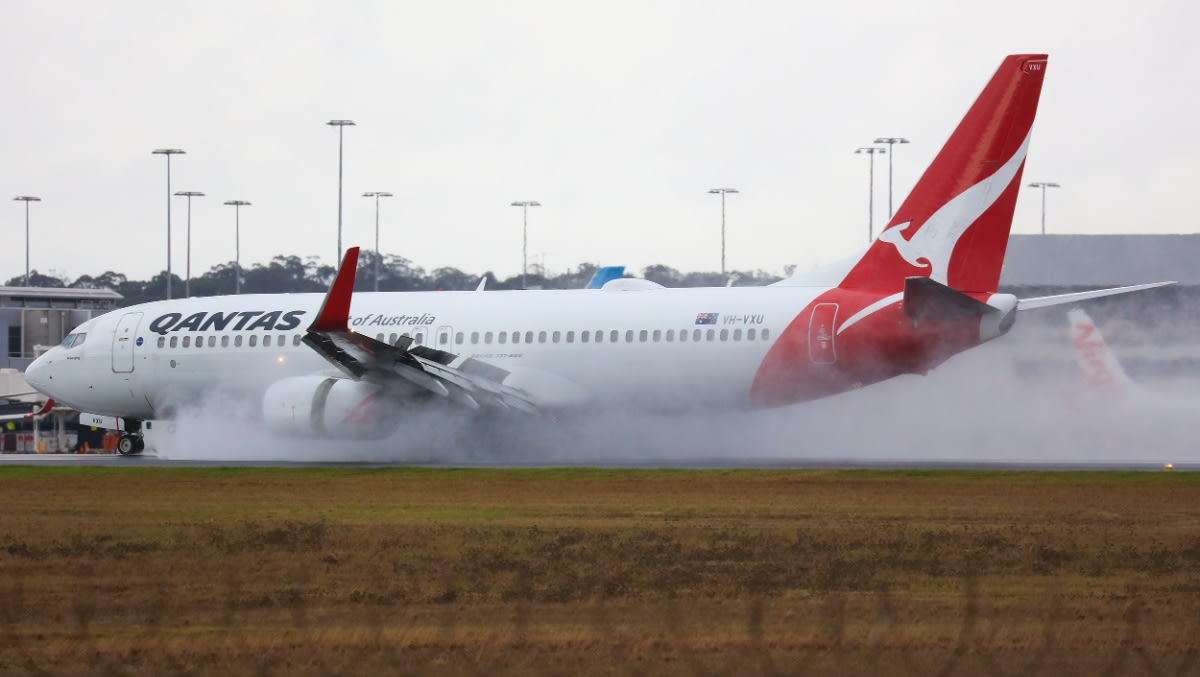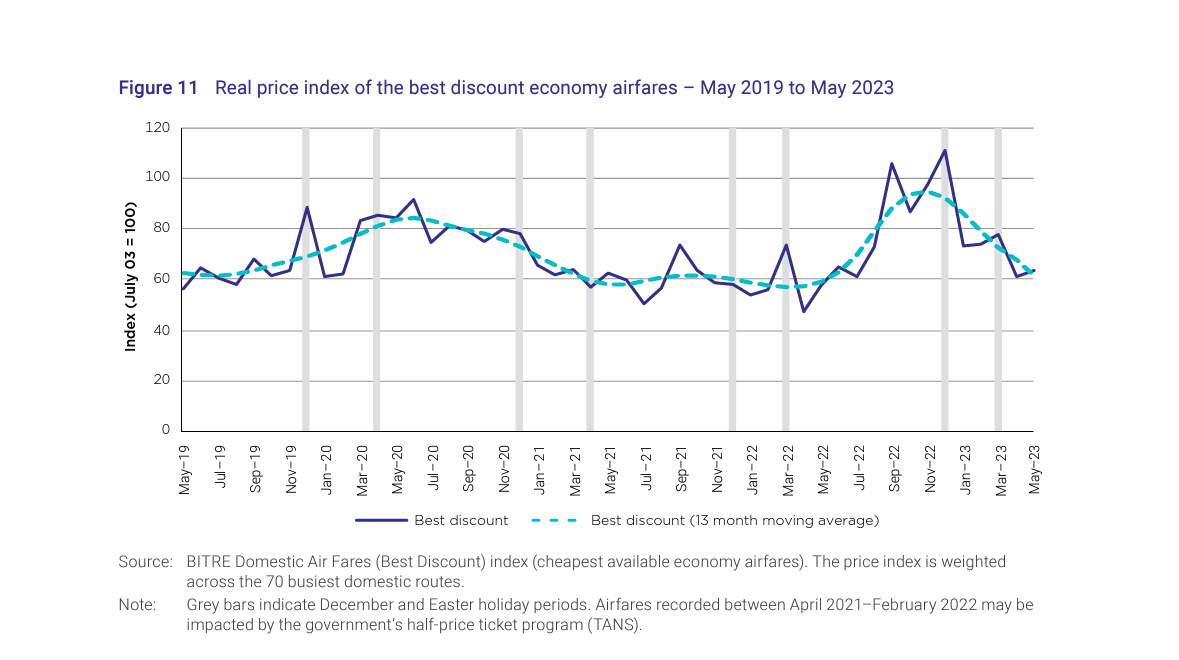
The number of people flying domestically is still 8 per cent below pre-pandemic levels despite airfares beginning to fall, the ACCC has revealed.
The final report by the competition watchdog on the aviation industry concludes that cost of living pressures and a weakening of post-pandemic demand are cancelling out lower ticket costs.
“Domestic airfares have generally fallen in recent months after hitting historically high levels in December 2022,” explains the report.
“These falls reflect a number of factors, including a decline in the price of jet fuel, an easing of pent-up demand for travel, the rising cost of living becoming a greater concern for consumers, and marginal increases to capacity.”
The report reveals that while prices have significantly lowered in recent months, rising inflation means they are still effectively higher than in 2019.
“Figure 11 shows the price index of best discount economy airfares in May 2023 was 43% below what it was in December 2022 and 14% less than in February 2023.
“Despite these recent falls, the price index was still 13% higher in real terms (32% in nominal terms) in May 2023 compared to the same month pre-pandemic.”
“This fall in best discount economy airfares was not observed across all routes collected by BITRE. Airfares on some routes have increased and continue to be significantly higher compared to pre-pandemic. In particular, the cheapest return fares for Coffs Harbour – Sydney was almost triple at $348 in May 2023.
“Similarly, several routes that have more than doubled include Brisbane – Darwin (up 172% to $622) and Launceston – Sydney (up 138% to $228). Other routes where fares have increased significantly include Cairns – Gold Coast (up 129% to $362) and Adelaide – Brisbane (up 121% to $398).”
The bad news around airfares comes despite jet fuel declining from $259 per barrel in June 2022 to $137 per barrel in May 2023.
The Morrison government ordered the ACCC to monitor domestic airlines’ fares, costs, and profits in June 2020 during the pandemic and provide quarterly reports. Monday’s is the last after Labor chose not to continue the program.
Last month, Australian Aviation reported how Sydney Airport’s domestic passenger numbers in April were still only at 86 per cent of pre-pandemic levels.
The business said the “sluggish” numbers were down to high airfares and airlines continuing to operate at reduced capacity.
However, the news came despite Qantas significantly increasing services on the Golden Triangle of Sydney–Melbourne–Brisbane in late March, a move many hoped would turbocharge the recovery.
In fact, the latest data suggests the domestic industry is actually going backwards.
In June 2022, Sydney Airport was operating at nearly 90 per cent of 2019 levels, while nationwide, the ACCC put the figure at 97 per cent.
Those figures, though, came alongside all-time records for delays being broken that month and in April and July.
In response, airlines cut flights and held staff in reserve to combat the problem, allowing employees to jump on to problem flights at short notice. The move led to fewer seats being sold and prices increasing to help fund it.
Sydney’s figures mirror those reported by Melbourne for the same month, which showed a slight decrease in domestic traffic.
















